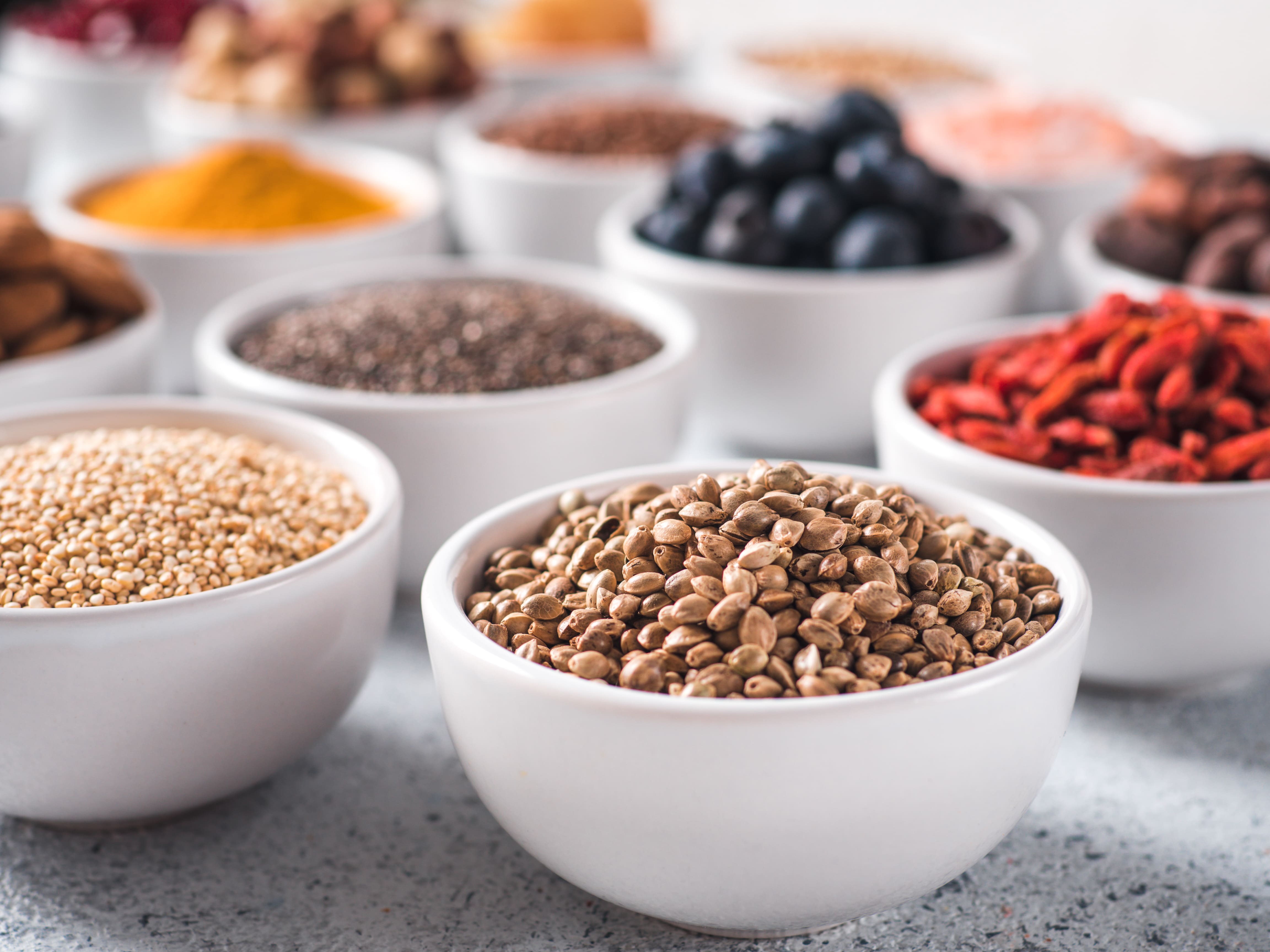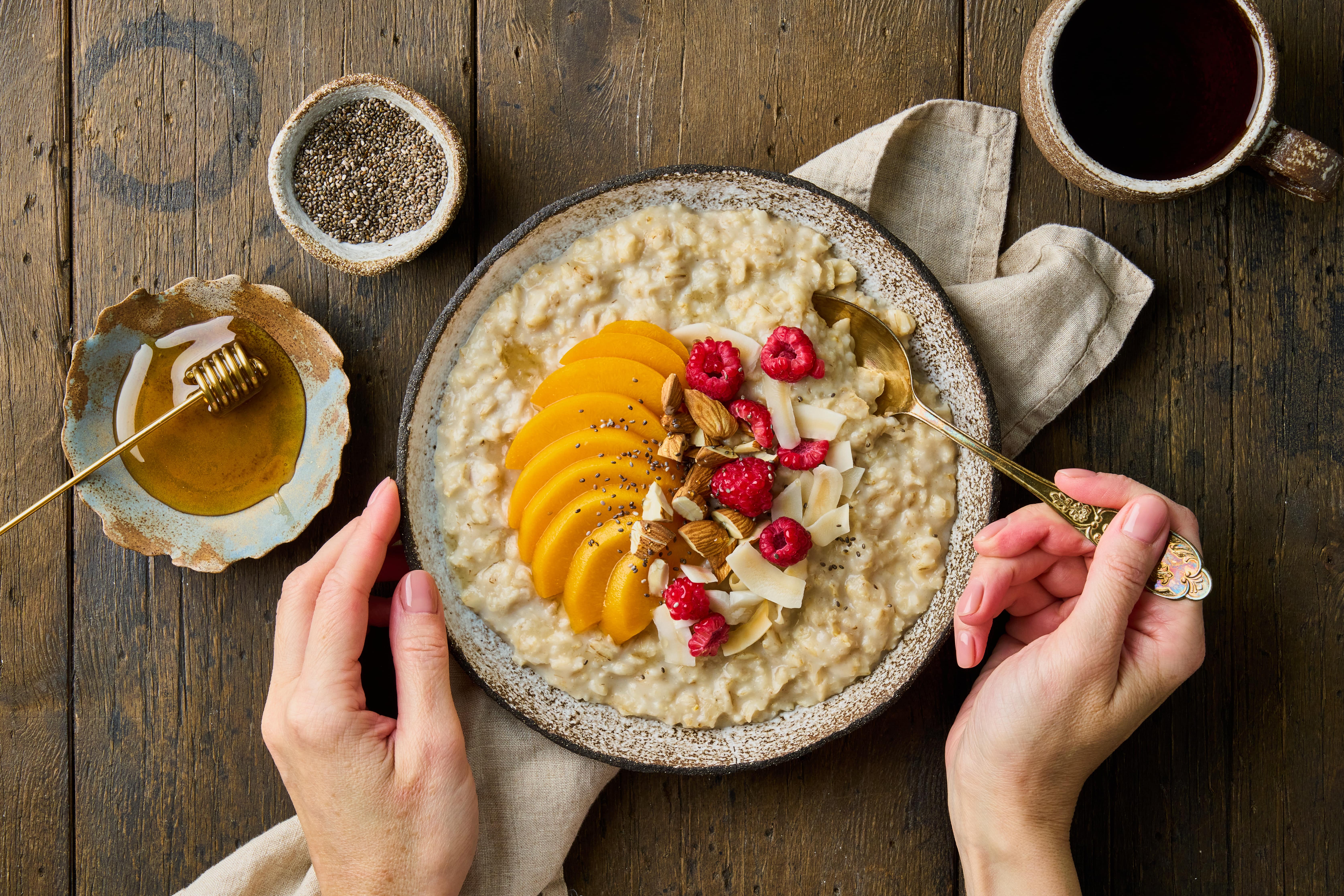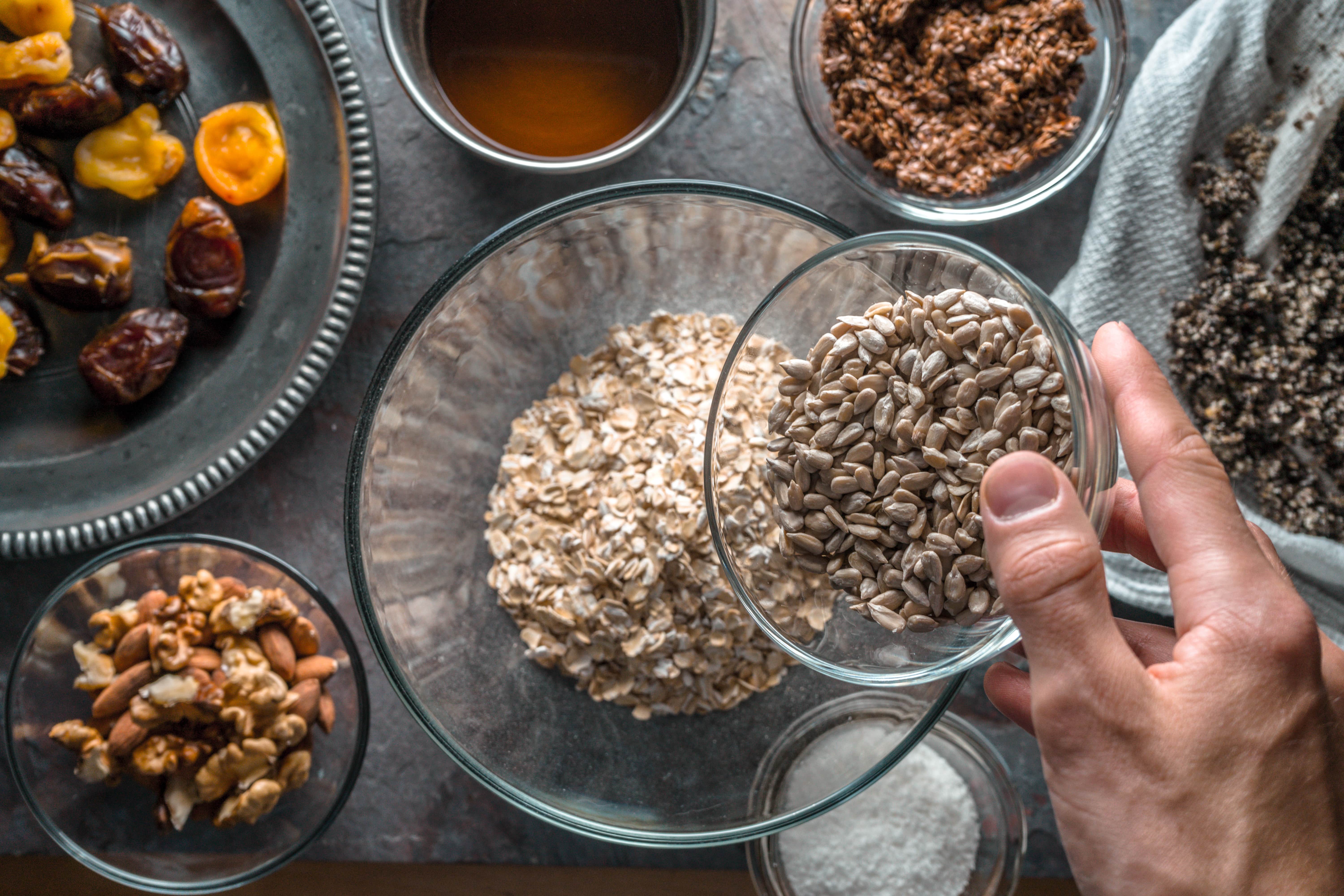Key Takeaways
- Fibermaxxing is a viral TikTok trend that focuses on dramatically increasing your daily fiber intake to support digestion, satiety, and metabolic health.
- A high-fiber diet has science-backed benefits, but going overboard too quickly can lead to uncomfortable side effects like digestive issues.
- You can safely increase your fiber intake by making small, consistent changes with whole foods, staying hydrated with plenty of water, and receiving personalized, expert guidance.
{{mid-cta}}
If you’ve spent any time on HealthTok lately, maybe you’ve come across fibermaxxing. It’s a growing trend where users are doubling or even tripling their fiber intake in pursuit of better gut health, appetite control, and blood sugar balance. But is it legit?
Videos tagged with #fibermaxxing have garnered millions of views, with creators showcasing their go-to chia puddings, fiber-packed wraps, and surprisingly detailed bowel movements (yes, really). Let’s dive into what fibermaxxing actually is, why fiber is essential for more than just regularity, and how you can safely add more fiber into your day without the bloating, cramps, or bathroom emergencies some people report.
What Is Fibermaxxing?

Eating more protein gets a lot of attention, but what about fiber? Fibermaxxing is exactly what it sounds like: intentionally maxing out your dietary fiber intake, often beyond the standard dietary recommendations, to support digestion, your metabolism, and appetite. Increasing your fiber intake involves adding fiber-rich plant foods like lentils, raspberries, oats, avocados, or flaxseeds, and sometimes layering in fiber supplements like psyllium husk or acacia powder to reach even higher daily totals.
Eating more fiber is not a new idea, but over-optimizing it is. Some TikTok creators are showing “what I eat in a day” vlogs that showcase fiber counts of over 40 to 50 grams per day. While it may sound a bit extreme, the message underneath is a good one: most of us could use more fiber.
The Science-Backed Benefits of a High-Fiber Diet
There’s a reason dietitians love talking about fiber; it does a lot for your body. And the truth is, most Americans don’t meet the recommended daily amount of fiber.1
Whether you’re fibermaxxing or just trying to hit your daily target, a high-fiber diet has serious science-backed perks:
- Gut health: Fiber is like fuel for your gut microbes. Certain types of fiber, especially soluble and fermentable fibers, feed the “good” bacteria in your gut, helping to create a healthy microbiome. In turn, a robust microbiome supports better digestion, reduces inflammation, and may even boost your immune system. Plus, fiber helps keep things moving smoothly, reducing constipation and supporting healthy regularity.
- Weight management: One of fiber’s most powerful benefits? It is filling! High-fiber foods slow down digestion, allowing you to feel satisfied for longer after eating. That means fewer cravings, less snacking, and more stable energy throughout the day. In one study, how much of fiber the patients were eating was the main determinant of weight loss.2
- Metabolism benefits: Fiber can also be a game-changer for blood sugar and insulin levels.3 Soluble fiber slows the absorption of sugar into the bloodstream, helping to prevent spikes and crashes. Over time, eating more fiber may improve insulin sensitivity and support better blood sugar control.
- Chronic disease prevention: Decades of research link higher fiber intake to lower risks of major chronic diseases.4 A fiber-rich diet has been associated with reduced risk of heart disease, stroke, type 2 diabetes, and even colorectal cancer.5
Is There Such a Thing as Too Much Fiber?

Yes, we know fiber is amazing, but more isn’t always better (especially too much too quickly). If you suddenly start piling on high-fiber foods or supplements without giving your gut time to adjust, you might run into some uncomfortable side effects.
Common issues include bloating, gas, cramping, or even constipation if you’re not drinking enough water. People with IBS or other digestive conditions may find that certain types of fiber or supplements may worsen their symptoms. In particular, consuming too much or being inconsistent with fiber intake can trigger digestive upset.
There’s also some evidence that very high fiber intake over time could reduce absorption of certain minerals like iron, calcium, and zinc, especially when most of the fiber comes from supplements or fortified products.6,7
Plus, not all fiber is the same. There are two main types, and they each play a unique role in your health. Soluble fiber dissolves in water to form a gel-like substance, which helps slow down digestion, regulate blood sugar levels, and lower cholesterol. You’ll find it in foods like oats, beans, lentils, apples, and chia seeds. Insoluble fiber, on the other hand, isn’t digested and adds bulk to your stool and helps keep things moving through your digestive tract. It’s found in whole grains, nuts, seeds, and the skins of fruits and vegetables. A balanced mix of both types of fiber is essential to support your health, and overemphasizing one or the other can lead to problems.
The takeaway here? Go slow and listen to your body. Gradually increase your fiber intake and drink plenty of fluids to give your digestive system time to adapt.
How Much Fiber Do You Really Need?
According to the Dietary Guidelines for Americans, most people fall short of the recommended intake. The average American consumes only about 15 grams of fiber daily, which is far below the recommended amount.
Here’s how much fiber most people should aim for each day:
- Women: 25 grams per day
- Men: 38 grams per day
- Over 50 years old: Your fiber needs decrease slightly as you age to 21 grams for women and 30 grams for men.
How to Safely Try Fibermaxxing

If you’re curious about adding more fiber to your day, slow and steady wins the race. Jumping from the average 15 grams per day to 40 grams of fiber overnight can leave you feeling bloated, gassy, and uncomfortable. Instead, work to increase your fiber intake by about 5 grams per day for a week at a time, allowing your gut time to adjust. And don’t forget the water: fiber needs fluid to soak up in the gut, so drink plenty throughout the day to avoid constipation.
Start with whole foods like lentils, black beans, raspberries, pears, oats, and quinoa, which offer a natural mix of both soluble and insoluble fiber. Fiber supplements, such as psyllium husk or acacia fiber, can help fill in the gaps, but they should be used in conjunction with a diet that already includes high-fiber foods.
If you need some inspiration, a high-fiber day could include:
- Oatmeal with chia seeds and berries for breakfast (about 12 grams of fiber)
- A lentil and veggie soup for lunch with a half-grilled cheese on multigrain bread (about 12 grams of fiber)
- A snack of apple or pear slices with almonds (about 7 grams of fiber)
- Stuffed peppers with lean ground beef, peppers, onions, and black beans (about 10 grams of fiber)
Need more ideas? Here are 12 Fiber-rich Veggies.
Who Should Be Cautious About Fibermaxxing?
If you have a sensitive stomach, proceed with caution when increasing your fiber intake. People with IBS, IBD, or other digestive conditions may find certain fibers or supplements aggravate their symptoms, especially fermentable fibers that can increase gas and bloating. Additionally, older adults with slower digestion may need to be more mindful of how quickly they increase their fiber intake.
Pick one meal at a time to increase your fiber, and once you’re in a good routine, add another to avoid increasing too much too soon.
Remember, fiber can bind to minerals like iron, calcium, and zinc, potentially interfering with absorption if intake is too high. If you’ve been diagnosed with an iron or zinc deficiency, check in with your healthcare provider before drastically changing your fiber intake.6,7
The Bottom Line
Fibermaxxing, like most trends, comes from a good place but needs to be personalized to your unique health history and lifestyle. Increasing fiber intake can be a powerful way to support digestion, blood sugar balance, and overall health, but it works best when approached gradually and intentionally. Focus on adding more whole, fiber-rich foods to your routine, drink plenty of water, and listen to your body as you increase your intake. If you have a digestive condition or other health concerns, it’s a good idea to consult with a healthcare provider or dietitian before making significant dietary changes.
At Signos, we believe that better health starts with better data. A CGM system can help you understand how your body responds to food, exercise, and stress in real time. Learn more about how Signos can help you achieve your health goals.
Sign up for tips and insights that work for you!
- Item 1
- Item 2
- item 3
Sign up for tips and insights that work for you!
Topics discussed in this article:
References
- Most Americans are not getting enough fiber in our diets. American Society for Nutrition. Accessed June 25, 2025.
- Miketinas, D. C., Bray, G. A., Beyl, R. A., Ryan, D. H., Sacks, F. M., & Champagne, C. M. (2019). Fiber Intake Predicts Weight Loss and Dietary Adherence in Adults Consuming Calorie-Restricted Diets: The POUNDS Lost (Preventing Overweight Using Novel Dietary Strategies) Study. The Journal of nutrition, 149(10), 1742–1748.
- Fiber: The Carb That Helps You Manage Diabetes. CDC. Accessed June 25, 2025.
- Fatima, I., Gamage, I., De Almeida, R. J. R., Cabandugama, P., & Kamath, G. (2023). Current Understanding of Dietary Fiber and Its Role in Chronic Diseases. Missouri medicine, 120(5), 381–388.
- Alahmari L. A. (2024). Dietary fiber influence on overall health, with an emphasis on CVD, diabetes, obesity, colon cancer, and inflammation. Frontiers in nutrition, 11, 1510564.
- Adams S, Sello CT, Qin G-X, Che D, Han R. Does Dietary Fiber Affect the Levels of Nutritional Components after Feed Formulation? Fibers. 2018; 6(2):29. 7. Shah, M., Chandalia, M., Adams-Huet, B., Brinkley, L. J., Sakhaee, K., Grundy, S. M., & Garg, A. (2009). Effect of a high-fiber diet compared with a moderate-fiber diet on calcium and other mineral balances in subjects with type 2 diabetes. Diabetes care, 32(6), 990–995.


.jpg)




























